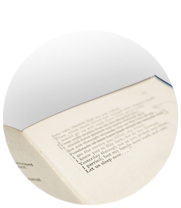
Owen’s influence on Britten
In War Requiem Britten set nine poems by Wilfred Owen. His interest in one of these poems, Strange Meeting, can be traced back to at least four years earlier to one of twelve selections he made for the BBC Home Service radio programme Personal Choice which aired in the summer of 1958. The following October Britten included Owen’s The Kind Ghosts in the orchestral song cycle Nocturne for tenor, seven obligato instruments and string orchestra. It replaced his original choice, Edith Sitwell’s The Youth with the Red-Gold Hair, possibly because its sombre tone and theme complemented the text that precedes it; an excerpt from Wordsworth’s The Prelude that reflects on the aftershock of war (in this case, the carnage observed during the Terror in late eighteenth-century France). The Kind Ghosts also concentrates on the legacy of war but in a way that effectively combines pathos with horror. The central character in the poem is an isolated woman who is surrounded by the spirits of dead young soldiers, but she remains oblivious to their presence. Enclosed by a vision of death she innocently wonders why she is encircled by a tomb-like silence. The imagery emphasises the accumulation of death, ‘Her wall of boys on boys and dooms on dooms’ underlining the tragedy of the annihilation of a generation of young men.
Quiet their blood lies in her crimson rooms
And she is not afraid of their footfall.
They move not from her tapestries, their pall,
Nor pace her terraces, their hecatombs,
Lest aught she be disturbed, or grieved at all.
There are several volumes of Owen’s poetry in Britten’s library, including one published just two years after the poet’s death which includes an introduction by his friend and mentor Siegfried Sassoon. However, the text from which Britten worked whilst writing War Requiem was an edition that included a detailed memoir by Edmund Blunden. In the middle of composition Christopher Isherwood sent Britten a copy of Osbert Sitwell’s autobiography Noble Essences of 1950. The book includes a photograph of the poet in uniform, which was taken in 1916 and it may have been this image to which Britten refers in a letter to Isherwood in September 1961. He thanks him for the ‘Sitwell book’ adding ‘I am delighted to have [this picture]. I am so involved with [Owen] at the moment & I wanted to see what he looked like. I might have guessed. It’s just what I expected really’ (Britten to Isherwood, 11 September 1961).
As with his setting of The Kind Ghosts, Britten concentrated throughout War Requiem on highlighting the tragic loss of innocence that comes with experience of the battlefield. In the ‘Offertorium’, for example, he draws upon the parable of Abraham and Isaac, a story which he originally depicted in his Canticle II of 1952. He revives the same music for his setting of Owen’s The Parable of the Old Man and the Young but instead of concluding the story peacefully, as he does in the Canticle, Abraham rejects the ram that he sacrifices to God in place of Isaac:
… the old man would not so, but slew his son, –
And half the seed of Europe, one by one.
Strange Meeting was eventually incorporated as the dialogue between tenor and baritone soloists that occurs immediately before the ‘In paradisum’ in War Requiem. Its striking resolution, of two former enemies resting peacefully in eternity, was a fitting way with which to end the work. Owen’s anti-war sentiment is interwoven throughout. Britten wanted to contrast a setting of the Missa Pro Defuncta, the Latin Mass for the Dead, with what he described in a letter to Dietrich Fischer-Dieskau as ‘magnificent poems, full of the hate of destruction’ whose purpose was to act as ‘a kind of commentary on the Mass’ (Britten to Fischer-Dieskau, 16 February 1961).
 © Britten-Pears Foundation
© Britten-Pears Foundation © Britten-Pears Foundation
© Britten-Pears Foundation





